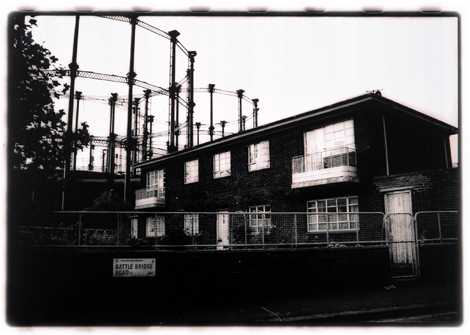
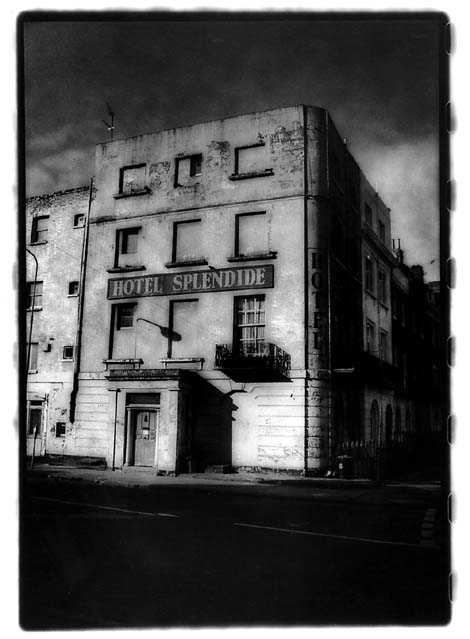
Peter Stone is a freelance photographer living in Bath. He took the plunge into the world of waiting each morning with desperation for cheques to arrive in 1990.
One of the first things he did was to look back at his past work to see if any could be used for his portfolio. He found some negatives from his time as an assistant in London in the late 1980s and started to print them up.
Reproduced here is selection from a portfolio of about 30 prints taken between 1987 and 1991. They were all shot on 35mm using wide angle lenses, all printed full frame and all toned in the same way to give a unified feel to the work.
"One of the first things I learned when I became interested in photography was to compose for an uncropped image in the camera, something I nearly always do in my personal work, so I decided to print full frame for all the existing shots I had as well as the ones I took later", he says.

The early shots were taken on mostly on fast Ilford films, HP5 and its successors. Following their introduction to the UK, he started using Fuji's Neopan 400 and 1600, and these two films are now his favourites.
Both these films have a base that is anti-halo tinted so that clear and precise images can be obtained, despite Peter�s treatment in printing which uses soft focus to put 'reverse' halation into the image (the shadows spread into the highlights). They are also both highly resistant to static marks and have a special coating which ensures a smooth transport when using motor drives. The 1600 can be processed with the 400 as it shares the same dev time, and has a push-pull capacity of 250 to 3200.
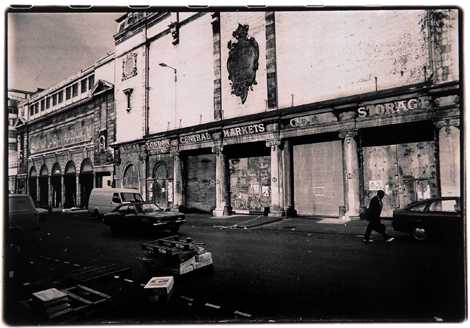
'Fuji Neopan has a great grain and is very nice to print from; the 1600 plus a red filter is a great combination. Actually I hardly ever use filters, as I think you can add most effects you want at the printing stage, this also gives you more scope.'
Peter decided he wanted to give this set of prints a dreamlike timeless feel, and devised his own method for obtaining soft focus. After making a conventional sharp minimum exposure, he places a piece of thin white card on top of exposed print. Opening up the aperture of the enlarger, he then givies an additional exposure which is just capable of penetrating the slightly translucent card. This has the effect of bleeding denser shadows into the lighter areas of the print, and also softening the image generally.
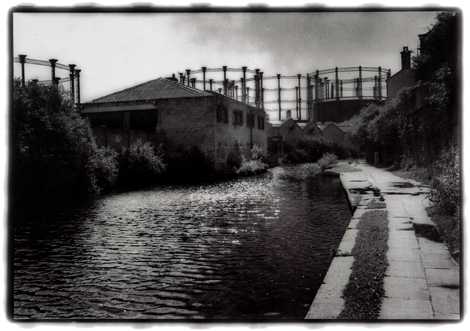
The De Vere 504 enlarger he was using made full-frame printing easy, using a twin glass carrier to sandwich the negative and the adjustable cropping masks to get just the right amount of border.
The prints were finally toned using copper toner. This toner has a variable effect according to the immersion time and the print contrast and density.
"All this meant that a great deal of time was spent in the darkroom and a great deal of paper was used", Peter commented. "At first I wanted to use fibre-based paper, but I found that the copper toner was staining the highlights and rebates and so decided to use resin-coated multigrade paper as the problem did not arise."
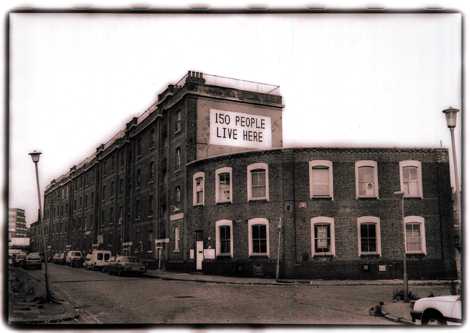
Peter�s clients still tend to be in London although he is gradually building up his English West Country contacts. His 35mm work is done a Minolta X-700, Nikon F301 and 501 with a 24mm and 35-70 zoom. His choice for commercial 120 work is a Mamiya RB67 with short-standard 90mm lens, and a Bronica ETRSi with a standard 75mm lens and wide angle 50mm. All of the London portfolio work was copied from the technically non-archival toned RC prints on to 6 x 7cm transparency on the Mamiya, using Fuji 100D or Velvia.
- Steve Newman